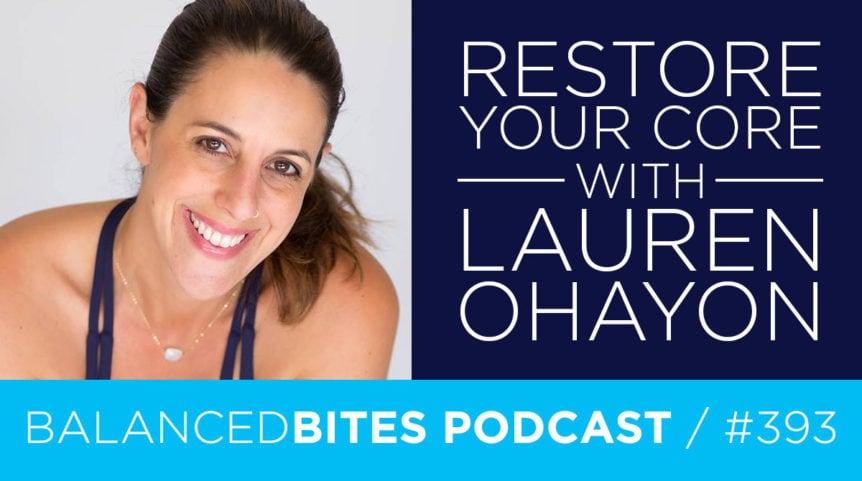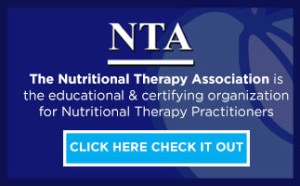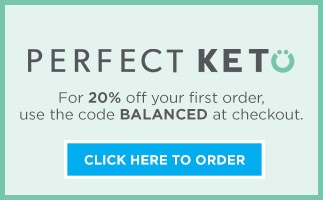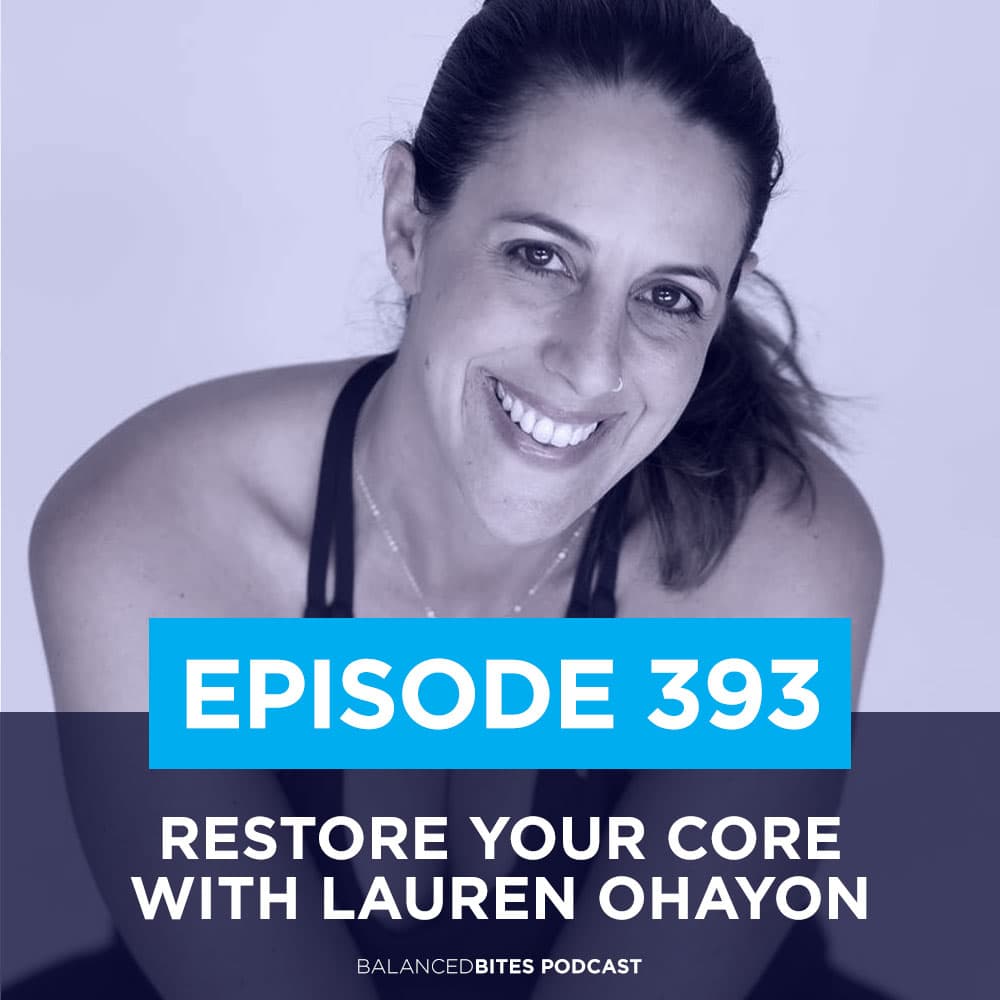 Topics
Topics
- News and updates from Diane [1:44]
- Baby Making and Beyond
- Balanced Bites Meals
- Introducing our guest, Lauren Ohayon, Restore Your Core [3:43]
- Form and function [10:03]
- Core and pelvic floor focus [16:27]
- Typical client interaction [21:18]
- Postpartum problems [27:08]
- Multiple ways of movement [31:02]
- Time is your best friend [37:57]
- Restore Your Core [44:25]
The episodes are also available in iTunes, Spotify & Stitcher.
![]()
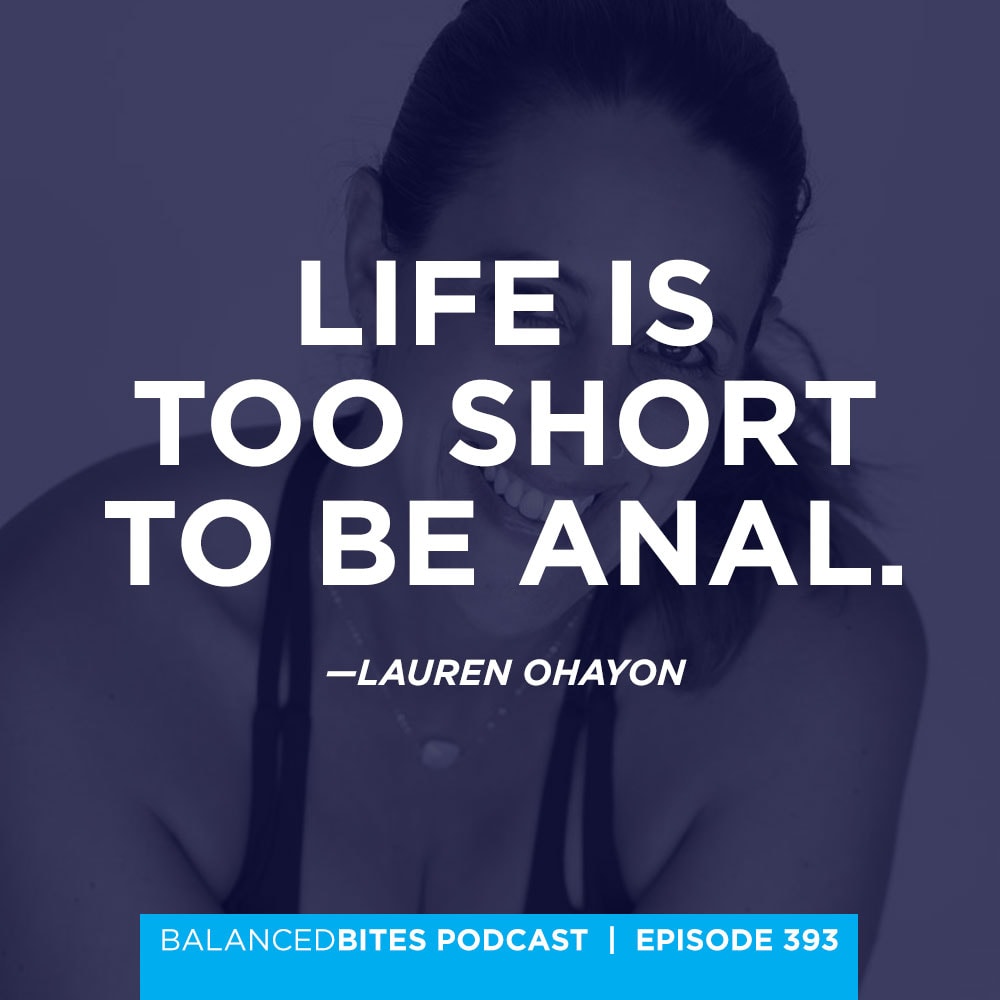
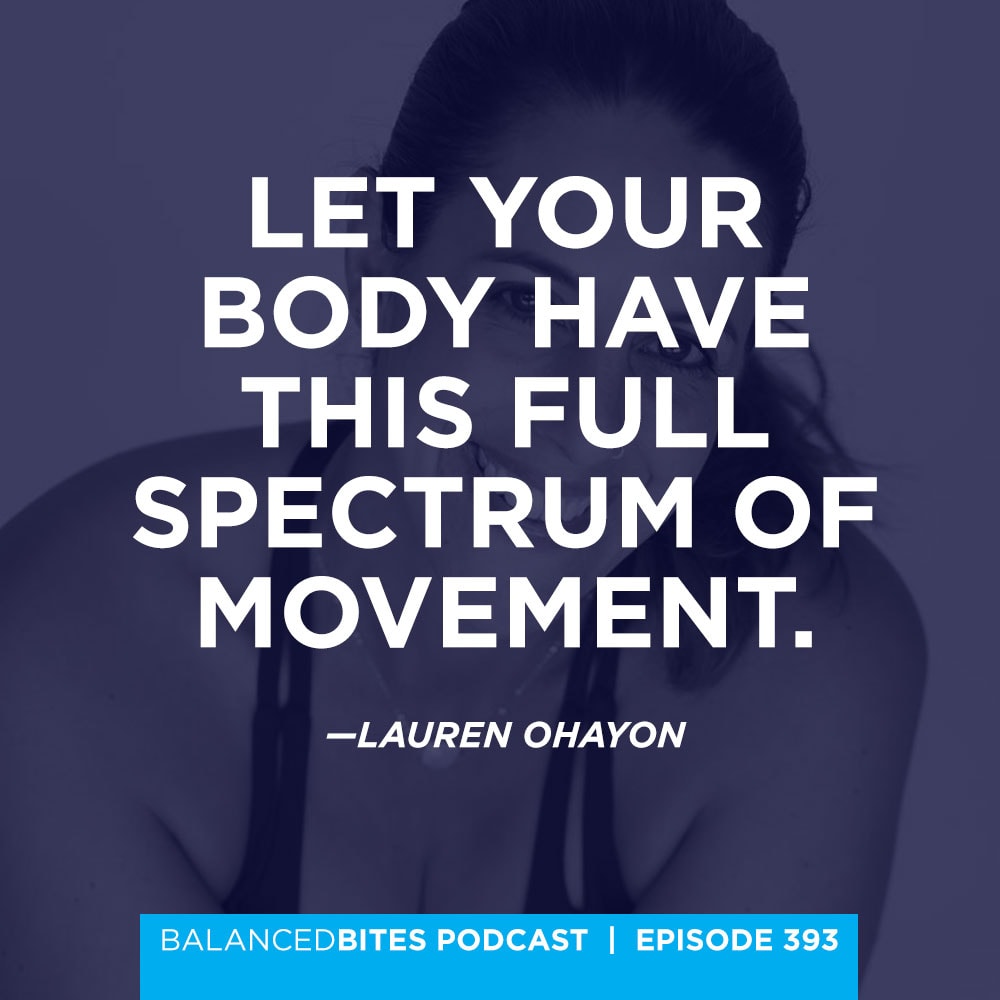
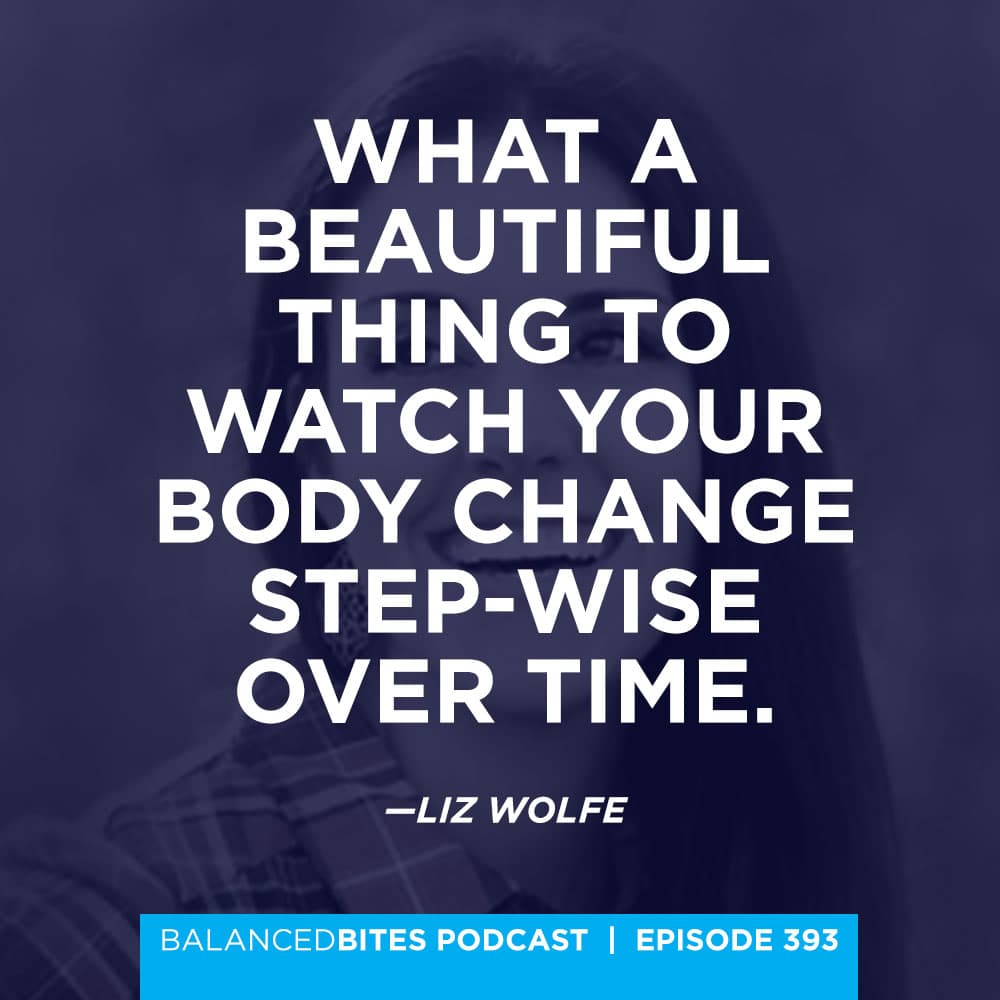
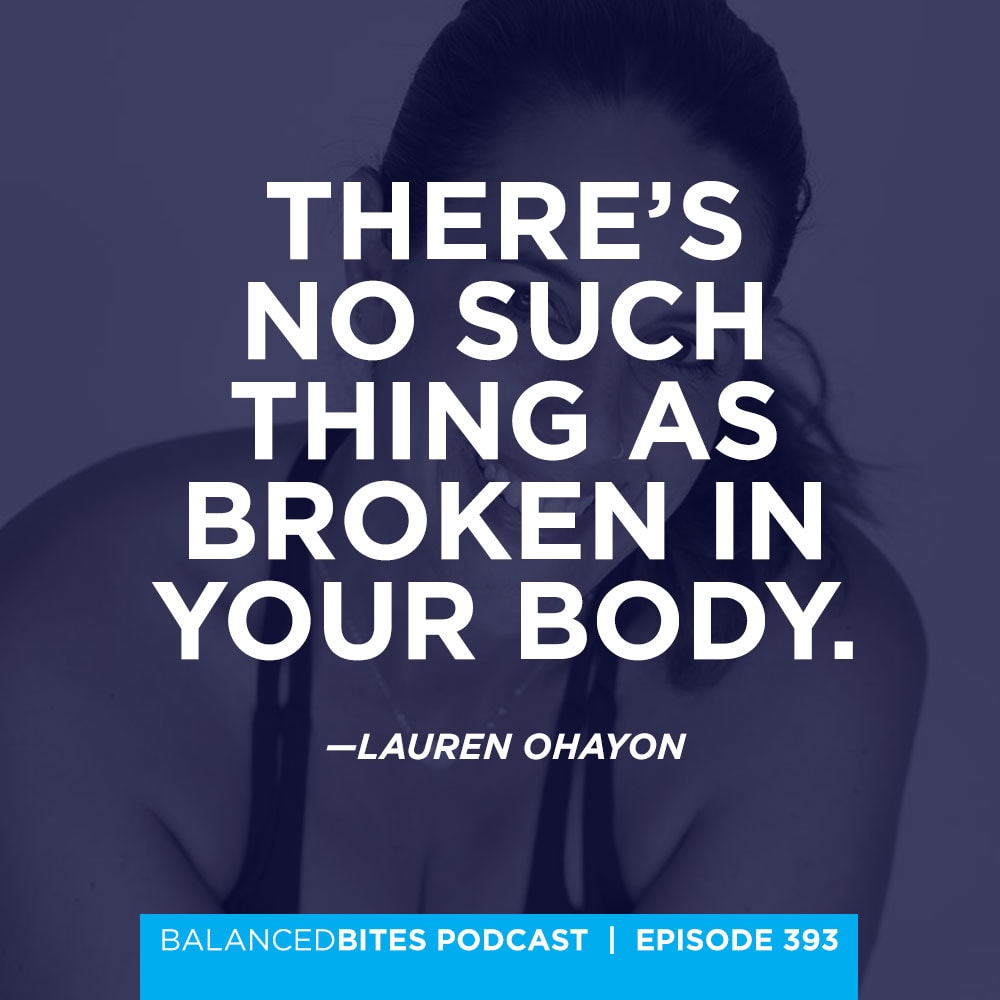
You’re listening to the Balanced Bites podcast episode 393.
Liz Wolfe: Welcome to the Balanced Bites podcast. I’m Liz; a nutritional therapy practitioner, and author of the Wall Street Journal bestseller Eat the Yolks; The Purely Primal Skincare Guide; and the online program Baby Making and Beyond. I live on a lake in the mystical land of the Midwest, outside of Kansas City.
I’m the co-creators of the Balanced Bites Master Class, with my podcast partner in crime, Diane. And together we’ve been bringing you this award-winning podcast for more than 7 years. We’re here to share our take on modern healthy living, answer your questions, and chat with leading health and wellness experts. Enjoy this week’s episode, and submit your questions at http://blog.balancedbites.com or watch the Balanced Bites podcast Instagram or Facebook account for our weekly calls for questions. You can ask us anything in the comments.
Remember our disclaimer: The materials and content within this podcast are intended as general information only, and are not to be considered a substitute for professional medical advice, diagnosis, or treatment. Before we get started, let’s hear from one of our sponsors.
Liz Wolfe: Today’s podcast is sponsored by Perfect Keto. Dr. Anthony Gustin and his teams have created a line of supplements that are super clean and effective, no matter what your dietary needs. Diane has been blending their MCT oil powder into her matcha latte lately. Not only are MCTs; medium chain triglycerides; a premium source of your body’s preferred type of energy; they help to fuel your brain and body, but there’s also no added taste. It makes your coffee or matcha wonderfully creamy. Check them out at PerfectKeto.com and use the code BALANCED for 20% off at Perfect Keto; and their sister site, Equip Foods.
1. News and updates from Diane & Liz [1:44]
Liz Wolfe: Ok friends, just a couple of quick updates. One from me. Don’t forget Baby Making and Beyond is launching soon. We are out of beta testing and ready for you to jump in. So head over to BabyMakingandBeyond.com for details. We are taking you from fertility, through postpartum, and beyond. By the time this podcast airs we should have our core four concepts loaded in and ready to be purchased. Which will take you from fertility through postpartum, as well as the content for our fertility and pregnancy specific modules, with postpartum and parenting not far behind, if they’re not loaded already.
You can invest in the program as it rolls out for a special price, so go to BabyMakingandBeyond.com and scroll all the way down to enter your email and get updates or to purchase the program.
Next update from Diane; don’t forget she has launched her Balanced Bites frozen meals. There are two options; paleo and keto. And if you order by Friday, they will ship the following Tuesday.
Liz Wolfe: The Balanced Bites podcast is sponsored in part by the Nutritional Therapy Association. The NTA trains and certifies nutritional therapy practitioners and consultants (including me; I’m an NTP), emphasizing bio-individuality and the range of dietary strategies that support wellness. The NTA emphasizes local, whole, properly prepared nutrient dense foods as the key to restoring balance and enhancing the body’s ability to heal.
The NTA’s nutritional therapy practitioner program and fully online nutritional therapy consultant program empower graduates with the education and skills needed to launch a successful, fulfilling career in holistic nutrition. If you're interested in learning about holistic nutrition but don’t necessarily want to become a practitioner, check out their new Foundational Wellness course. To learn more about the NTA’s nutritional therapy programs, go to http://www.NutritionalTherapy.com. Registration is now open for their May class through April 26th. You can learn more and save your seat by going to NutritionalTherapy.com.
2. Introducing our guest, Lauren Ohayon, Restore Your Core [3:43]
Liz Wolfe: My guest today is Lauren Ohayon. She is an internationally recognized yoga and Pilates teacher, specializing in core and pelvic floor issues. In addition to yoga and Pilates, she is also certified as a restorative exercise specialist, and holds certifications in neurokinetic therapy and anatomy in motion.
She has been teaching for two decades, and she helps women exercise intelligently, strengthen their bodies, and build functional cores and pelvic floors so they can move without compensation and exercise without harming their bodies.
Her Restore Your Core program is for women with any core or pelvic floor issues, including diastasis recti. I always say that silly. Who are looking for a program to help them close their gap, reduce their leaking, and get stronger in their whole body.
Lauren, I don’t feel like I encapsulated everything that you do in that small introduction, but we’re going to get into a lot of stuff today. First, I just wanted to welcome you to the show.
Lauren Ohayon: Thank you so much for having me. I’m a huge fan, so I’m excited to be here.
Liz Wolfe: Well that’s kind of amazing to hear, because I’m a huge fan. And I’ve been following you and receiving your emails for a long time. And you’ve kind of been my; what’s that thing where you're chasing the white whale? I don’t know if that’s what it is. {laughs} But I never thought I’d get to interview you. And then when Vanessa Gengler, my Baby Making and Beyond movement expert, connected us via email I kind of secretly was like; oooh! This could be really great. So I’m just really excited that you're on the show.
Lauren Ohayon: Thank you for having me. I’m so excited.
Liz Wolfe: Oh my gosh, I’m just so glad you're here. So, I’m guess that most of our audience is at least basically familiar with your work. But I would for you to introduce yourself a little bit in more detail. Talk about where you came from, how you decided to engage in this work and why. And then what you're doing now, and what you're passionate about.
Lauren Ohayon: Great. So as you said, I started teaching yoga in my early 20s. I’m now about to turn 42. And I was hardcore into yoga; super flexible in my body. I was teaching a very intense type of yoga, and I actually herniated three disks in my lower back. Which put me into rehab for a year.
So instead of having surgery, I did rehab. And it took me a long time to find what was working in my body to rehab it. And it got me really interested in an idea of root causes for our injuries, without laying blame on ourselves. Which is understanding; what are our patterns and habits that might lead us to be compensating in ways that we’re just not aware. And how amazing if we could figure it out, so that we could move forward with more integrity in our movement.
So I was teaching; I changed how I taught. I got certified to teach Pilates. I started studying a lot of anatomy. And once I had my own children, 12 years ago, then I really got interested in working with other women. Mothers and postpartum, prenatal. And I started seeing a lot of diastasis and pelvic floor dysfunction in my practice.
And about four years ago I launched Restore Your Core. I felt like there was a need for this kind of program online. There were other programs addressing the issues, but I felt like my approach was a little bit different. So I launched it, and it was very well received.
Liz Wolfe: That’s great. And any postpartum group that I have ever been in. I’m telling you, whether it’s a local group in Kansas City or some of the more ancestral health focused groups on Facebook, your program is always the first one that people throw out there for women that are struggling with these issues. It’s really cool just to see that in real life, how many people are benefitting from your program.
Lauren Ohayon: Yeah. The outreach has been far and wide, which thank you to Facebook for the Facebook group. And then I do a teacher training program, so now we have real humans on the ground spread around the world, actually. So the word is definitely getting out.
Liz Wolfe: So when did that demand start for actual; for teacher training? Did you start the program and it was going to live fully online and then you just had so many practitioners, you wanted to have hands on type experiences for clients? How did that come about?
Lauren Ohayon: It started wit me doing in-person workshops. I realize that online; there’s a lot you can’t do online. And a lot of what I do, very intuitively, is be able to look at people. How they move, and their strategies. And getting in and out of positions. And you just can’t do that online. So I thought; you know, let me teach workshops. I’ll meet people in person. I can look at them. I can watch how they breathe, I can watch how they move, I can watch how they strategize in their bodies.
But that still wasn’t enough, because then people were like; I love your system. I want to work in this system. And I had a lot of OTs; occupational therapists, and physical therapists. And even chiropractic doctors who were asking me to train them, too. Would you ever do an online training?
So I just thought; you know, let me get teachers on the ground. Because this work is better done in person; as much as I love my online program. This work is really phenomenal one on one, or in a group setting. So yeah, it all evolved organically.
Liz Wolfe: That makes total sense to me. It is funny; what an introvert I am, I would prefer to buy an online program. But after having my daughter, I really just don’t have as much time to mess around and wonder whether I’m actually apply the content the way it should be applied. So I’m really on a tear right now where I want to work with people, one on one, in person. So I think that’s so great that people have that option.
How do people find a Restore Your Core practitioner?
Lauren Ohayon: Well sometimes it’s through the Facebook group where a lot of the practitioners are posting answers. And then people do their own research. And they end up doing either one to ones with them or even Skype. But I do have a teacher’s directory on our website. So on the website, there’s a teacher directory and people can search that way.
Liz Wolfe: OK, perfect.
Lauren Ohayon: Yeah.
3. Form and function [10:03]
Liz Wolfe: Ok so let’s get into a little bit of what you see in your clients, and what your mission is around; now I’m going to say it right. Diastasis recti? Did I do it?
Lauren Ohayon: I think it can be recti or rect-i. Depending. And it can also be diastasis. I don’t even fuss. I go back and forth between everything.
Liz Wolfe: Why is that so hard. It’s so silly. And I’m a word person, too. That bothers me.
Lauren Ohayon: I hear you.
Liz Wolfe: {laughs} Let’s talk a little bit about why you’re so passionate about helping women with these issues. And you talked about herniating disks in your yoga practice. What I kind of gleaned from that is you recognize that there is a huge, I don’t want to say problem, but maybe a huge opportunity in kind of the conventional way that women look at exercise and how to get their bodies healthy or moving. And that it’s not always necessarily healthy, how women approach this in daily life.
So talk a little bit about how this became so important to you.
Lauren Ohayon: So there’s a difference between form and function. Something can look; and in our society, women, some women, want a flat tummy. They want a six-pack. They want to be super toned, and fit. And when they end up with injury, it can be extraordinarily upsetting, disturbing, shocking. And what I often hear is; but I’m so strong. Why did this happen to me? But I’m so strong. I have lots of big athletes in my program as clients.
I think there’s always this shock between, “I’m so strong, why is this happening to me?” or, “I’ve been working out my whole life and I’m so fit, and I have such a flat tummy. Why me?” and I think when I first started, it was my mission back then when I first started with the online work. Fit and function don’t go hand in hand. They can. And there’s nothing wrong with wanting a flat tummy. There’s nothing wrong with wanting to have a six pack. I do not shame women for any choice they made, whether whatever size boobs they want. Whatever they want. I don’t care.
However, just understanding; I think having the educational tools to understand where injury comes from can take us really far with preventing injury as we age. Having a baby is the tip of the iceberg. We all have to go through menopause, which brings up another set of phenomenal, fantastic, rules to the game.
So I think being as armed with knowledge, as much information as you can have going into all of these scenarios about your body can set you up for more success in your body. I have a lot of runners who think they need to give up running, because they have a prolapsed uterus; which means that the uterus has slipped down into the vaginal cavity.
My approach at this point is; why don’t we focus to being able to get back to all the things you love, but doing it in a sustainable way. So having there be this step by step. As opposed to maybe where I used to be, which was like; those things are bad for you anyway and you shouldn’t be doing them. Which is just a very judgmental way to approach. There’s no one good exercise. And I think in the past I was definitely more like; this is good and this is not good. And now I’m like; all of it is legit. All of it is good. I dabble myself in a whole bunch of crazy forms of exercise. And it’s more empowering to be able to do a lot of things with your body rather than to feel limited because you’re injured.
Liz Wolfe: Or to feel shame because of something you really love to do, and you're not supposed to love it.
Lauren Ohayon: Totally.
Liz Wolfe: That’s a really interesting point. And I’ve tried in the last couple of years to reduce that polarity in the way I approach things as well, where it’s either this thing is bad and you shouldn’t be doing it. Or; “this type of stuff is good, and you should learn to love it.” I love that you're helping people find that sustainability. Which really, that’s the goal for everything, right? Food, exercise, mental health. You find a place where you can function sustainably over the long-term, and have that enjoyment in your life.
Lauren Ohayon: Absolutely. And I think also; obviously, life is too short to be that anal.
Liz Wolfe: {laughing} That’s the quote for today.
Lauren Ohayon: That’s right. And we don’t always know. There is not this very specific correlation between what you do in your body breaks down your body. There is no hard and fast research about that.
So a lot of those of us who teach a safer way to exercise, we don’t really have information that it’s safer. Right? Just because we’re being more mindful, or our squat has better alignment. Do we really know that that leaves you to not wearing down your knees long-term? No. We do not have any solid research on that.
We have correlating research. And correlating information. And anecdotal information. And those go really far. And there’s a lot of weight to that, too. But I think we cut ourselves short as practitioners when we fear monger and when we act like one way of exercising is better than another. We limit ourselves from our own potential as practitioners.
Liz Wolfe: Oh my gosh, I love that. I love this idea of not fear mongering. And frankly, I think that I see it a lot when people have something to sell. Right? That’s kind of the way that you get attention on the internet. Is to sell fear in some way or another. But you are such an amazing example of bringing this really amazing, really helpful, really honest information to people. And people really appreciating it and spreading the word. Which is another reason I’m so excited to have you on the show.
Lauren Ohayon: Thank you. And I have to say that I did ride that boat for a while. I was definitely guilty of that.
Liz Wolfe: Me too.
Lauren Ohayon: Because I was seeing so many people injured from so many different types of exercise that I thought; wow. If only people could move a little bit better. Or exercise a little bit different. But again, I think it’s a really limiting way of thinking. And, we can also see people who do everything “right” and still get injured. And then what do you say to those people? You’re screwed. You must have done something wrong somewhere. You must have screwed up and you just don’t know it.
I mean, it’s just unfair. So we have to be open to all possibilities. And just meet our clients where they’re at with their goals. See where they’re at. And help move them forward.
4. Core and pelvic floor focus [16:27]
Liz Wolfe: Ok, so how did you really drill it down to core and pelvic floor? That really seems like, just over the last maybe year or so, more and more people are talking about core and pelvic floor. Which is great. And I love it. But how is it that you really drilled down to those two things, and started focusing on them so intently for so many women?
Lauren Ohayon: Ok, so I’ll be very frank about it. I had a different online offering. I was offline; I was living happily in a metaphorical cave in New York City.
Liz Wolfe: So great.
Lauren Ohayon: Yeah. Teaching to my local women. Teaching retreats. I loved what I did. And a woman; my best friend. A woman. My best friend came on a retreat with me. And she was a business coach. And she was like; you need to put this work online. And I was like; oh no. Oh, no, no, no.
Liz Wolfe: {laughs}
Lauren Ohayon: Imposter syndrome, all of it. I was like; no. And I did. She was like; why don’t I take you on as a client, and I’ll do everything for you. Just follow what I tell you to do. So I was like; ok.
So I put these offerings online. And people weren’t biting. The offerings were basically like; “Learn to do yoga safely.” How to not jack up your body as you do all these yoga moves. And there really; nobody was really biting.
And then I saw this blog by a man that was called, “Why your vagina is loose, and how to make it tight.”
Liz Wolfe: Wow.
Lauren Ohayon: And I kind of went through the roof, and I was like; what?! And it really bothered me because he had thousands of comments on the blog. But you know how you can tell when someone has paid for the comments and likes? So it’s one of those situations. And I was like; this is unfair. Because as a result, he’s getting a ton of people reading it. And his information is really not accurate. I mean, his whole thing was, your vagina is loose but all you need to do is learn to jump up into a handstand. And then your core will pull your vagina out of loose.
Liz Wolfe: What?!
Lauren Ohayon: First of all, there’s no such thing as a loose vagina. I was like; this is all forms of wrong! Your vagina can’t be loose! It might feel cavernous to you postpartum, and that’s legitimate. But there’s never a loose muscle. Loose doesn’t exist when we’re talking about our muscles.
So it was really interesting that he was talking about this muscular area, and he’s the yoga expert. Yet he was completely using all this misinformation, left right and center.
So I wrote back a comment to him, just kind of highlighting all the places where it felt very inaccurate to me. And he deleted my comment immediately. So I made a video, and I responded. And I made this very quick video. Just all music; a slideshow video with music. And it went, for me, “viral”. It was shared so many times, and so many people emailed me and wrote to me, and they were like; we want to know more. Tell us more.
And that’s when my business coach was like; ding-ding! You know a lot about the core and the pelvic floor. You're not focusing on it because it’s just what you do in your private practice. Why don’t you try to create some pelvic floor and core videos and see what happens?
So I did a bunch for free. Again, just through my Facebook, and again this same thing happened. Everyone was emailing me, writing to me. Tell me more. We want to know more. So I thought; oh, let me open up a Facebook group. I’ll just call it Restore Your Core. Let’s see what happens.
And of course, in my mind, I was percolating this program. And I went to my life-partner, and I told him; I think I want to make this program. And he was like; but you’ve got another program online and it doesn’t sell. {laughs} What makes you think this is going to sell? And I was like; I think I’ve got it. I think people want it. I really think people want this information.
And I did. I made the program, and people really wanted the information. It just kind of blew up from there. And I think because I was talking about it in a way that wasn’t; “Oh, well if you’ve got pelvic floor dysfunction just do Kegels.” Or, “If you’ve got core dysfunction, tighten your core all day.” Or, “Let’s try to get your belly flat again.”
So I wasn’t talking in those terms. And I think it was just a new, different way of talking about the core and pelvic floor. I wasn’t seeing a lot of it online yet. Now, a lot of people are talking this way, which is great. But back then, not so much. So that’s how I really niched out. I wish it was a sexier story. {laughs}
Liz Wolfe: No, that is a very sexy story. And I think that what’s really great is you recognized a need and you filled it in an authentic and; I don’t know if this is the right word. But an authentic and ethical way. And that will always finish first, in my opinion. It might take a little bit longer {laughs} You’re not asking people just do a handstand and let their vagina fall back in. I have no idea what that even means. But I think it’s wonderful, and I think there’s a whole kind of rising tide of empowerment in that women are really searching for context. And they really want the real-real about what’s going on in their bodies. They’re sick of quick fixes. They’re sick of sales pitches and stuff like that. And they’re really looking for the straight poop on what’s going on. And I just think it’s wonderful that you can be a leader in that space.
Lauren Ohayon: Yeah.
5. Typical client interaction [21:28]
Liz Wolfe: Tell me a little bit about your; give me a fictional client. Maybe somebody that’s postpartum, that is struggling with maybe bladder leakage or pelvic floor dysfunction or a diastasis, or something like that. And walk me through a little bit of what maybe your program would do for them or what you would do for them in person. Maybe those two things are the same. Let’s just see if we can help people sort of recognize themselves in one of your client avatars.
Lauren Ohayon: That’s a great question. So one of the things we do first, if I was in person. And I do this through the online program as well. But let’s say in person. The core works as a system, and it’s easy to think of the core simply as a set of muscles in the front of our body. And we look down, and we can poke our core. And when we have a diastasis, you can see a physical manifestation from the front of your body.
But it’s trapped between your pelvis and your ribs. So your core is trapped between your pelvis and your ribs, and then it attaches connective tissue and muscle to the back of your body. So you’ve got your spine as part of your core. And you’ve got your ribs and your pelvis. And we don’t often think of the core as being, again, anything more than just the set of muscles in the front that we can see, and then suddenly they’re compromised.
Liz Wolfe: And you do crunches to make them stronger.
Lauren Ohayon: Yeah, totally.
Liz Wolfe: That’s the way I had always thought of it, for sure.
Lauren Ohayon: Yeah. And there’s nothing really wrong with thinking of it that way, but there’s just a little bit more to the story. So let’s say we have our ribcage in the top and our pelvis on the bottom. Let’s just say the ribs are designed to move mechanically speaking. They’re designed to move a specific way. Right? We’re supposed to be able to twist. We’re supposed to be able to side bend. We’re supposed to be able to arch and round our back like a cat and a cow. We’re supposed to have these three-dimensional movements available.
But let’s say that for a whole variety of reasons, whatever those reasons are, we’ve become limited in those movements. We’ve kind of locked down our ribcage. Our core will also be affected. Because our body is not just bits and bobs that are connected via some kind of; everting is connected. It’s easy to kind of break the body down and to isolate, but our bodies are really integrative systems.
So, like if our ribs are not doing what our ribs are designed to do, our core can’t really function as a core either in it’s fullest potential. So our pelvis is the same way. For whatever reason, a lot of us have locked our pelvis down. Our pelvis doesn’t move through its full range of motion.
So when someone comes to me as a client, the first thing I’m looking for is; what’s going on in that whole system. Can they rotate in their ribs? Can they move their ribs? Can they breathe into their ribs? A lot of us have been taught that belly breathing is the more superior breathing pattern. But belly breathing actually puts a lot of pressure on the core and pelvic floor. Because the core is not designed for that.
Liz Wolfe: Oh, wow.
Lauren Ohayon: Yeah, interestingly enough. This might be super boring and esoteric, but let’s trying it. Interestingly enough, the way that most of us think of our belly is being able to expand. Our belly has no ability to expand. It just bulges.
Liz Wolfe: Wait! What?
Lauren Ohayon: Yeah. Our belly can’t expand. I know. But our ribs can. Our ribs are designed to expand. Our ribs have all of the tissues, the muscles, the connections, the shape, the bone connections. How the ribs are formed; they expand. But the belly doesn’t. What it does is it bulges.
So take a water balloon. Take an oblong, like an oval-shaped, egg-shaped water balloon. Fill it with water, of course, because it’s a water balloon. Squeeze the top; what happens?
Liz Wolfe: It bulges!
Lauren Ohayon: Correct. That’s your abdominal cavity.
Liz Wolfe: What? So that’s the difference between what pressure; responding the pressure and actually expanding.
Lauren Ohayon: Correct. And when we’re pregnant, for example. Or we have a lot of; we’re full of food. We have a lot of food, or we’re pregnant. Then the organs themselves can expand. But the abdominal cavity, as a whole, does not expand. Which means when we put a lot of pressure into it, the pressure has no where to go. It can’t be dispersed. So it has to push forward into a structure that’s not designed to handle that much pressure, or downwards into the pelvic floor. And we keep pressing down into the pelvic floor, which creates the bulging sensation. And it’s not designed to be able to handle that much bulging and pressure, either. Whereas if we breathe into our ribs, our ribs do expand. They accommodate. Our ribs can accommodate that level of expansion. Our belly doesn’t.
Liz Wolfe: My mind is blown over here.
Lauren Ohayon: So one of the things we look at in Restore Your Core is; what is the strategy? Are we bulging into our bellies with how we breathe, with how we engage our core? And it’s fascinating to observe people in their patterns. And it’s fascinating to just let the lightbulb go off in someone’s brain where you're like; this is a high-pressure system. Feel it. Feel it in your body. Let’s create more pressure. And now let’s do the same exercise in a low-pressure system. And how does that feel?
So it’s really interesting. One of the things we’re trying to do is reduce the amount of pressure that we’re putting into our abdominal and pelvic floor cavities as we move, breathe, sit, stand, lift our children, push a stroller, open a door.
6. Postpartum problems [27:08]
Liz Wolfe: Do you find at all that women postpartum; that’s kind of when they first, I don’t know how to ask this. And I have a problem with making these interviews about me sometimes. But {laughs} it helps to give a personal example.
Lauren Ohayon: Yeah.
Liz Wolfe: I think I’ve always kind of had the same patterns in my body. But postpartum was the first time I really recognized some of the specific pelvic floor stuff that I was grappling with. Is there something about pregnancy and birth that highlights these issues that we have always had? Or is it a matter of it actually causes these issues? Or is a little bit of both?
Lauren Ohayon: I think it can be a lot of both. I think it can definitely; it’s hard to say. Sometimes it feels like a lot; people will come to me often with the narrative of; “I didn’t have prolapse. Or I didn’t have a diastasis. I got pregnant, and then I got those issues.”
But we don’t know; I can’t go back in time and neither can they. We don’t know; were you always a belly breather? Were you always limited in your rib movements? Did your pelvis; was it always this tucked? And there is no point really in me going backwards to try to pinpoint where’s the blame. However, oftentimes pregnancy just exacerbates what’s already happening in the body.
And I have another program called One Strong Mama, which is my prenatal program. And I had an amazing amount of Restore Your Core women then get pregnant again, and now they do One Strong Mama. And the difference in their body; how they feel postpartum. Their prolapse. It’s incredible the difference between one baby and the next. Or one pregnancy and the next. In just changing some of these areas that can create more pressure, less pressure. So change in some of these patterns that can create a less optimal situation for your core and pelvic floor.
So, I definitely think that pregnancy can pop it all out to the forefront. Yes. For sure. And I do think pregnancy is so weighted, and it’s so loaded. And then the next place it happens is menopause. So I get a lot of people who have never had a baby, but all the issues. The pelvic floor, specifically, begin in menopause.
Liz Wolfe: So why would that be?
Lauren Ohayon: Because our estrogen levels; our hormonal levels have changed so much that the support system for the muscles is different. So because the support system is different, our organs are more susceptible. What holds them in place is less fortified.
Liz Wolfe: Gotcha. That’s fascinating. And totally speaks to your point earlier about how we are an integrated system. And when you said that, I thought; I was thinking about it in terms of the structure of the body. But our hormonal environment is interacting with our structural environment. And all of that. That’s amazing.
Lauren Ohayon: Totally. And it’s the same way that a lot of women who have a diastasis recti are so confused about why their digestion is affected. And our core muscles provide the really important support for peristalsis; for digestion and all of that. When you think about it, it makes a lot of sense that that kind of wrapping, tightening support that the core gives to the intestines. If it’s not there, then our digestion; we might have digestion issues. More bloating, a lot of those issues. Difficulty with evacuating. That comes up a lot with a diastasis. People are always surprised to find that connection.
Again, we think of our bodies in these isolated systems. But, they’re all working together.
7. Multiple ways of movement [31:02]
Liz Wolfe: That’s so fascinating. And one of the things that I’ve noticed interestingly about my daughter; just watching kids is so interesting. Because, TMI, but she has no problems evacuating her bowels. It is like a totally straightforward process. And these are not small evacuations. These are, {laughs} you know? And it’s fascinating to me. Sorry to bring up my daughter’s bowel movements. But if you observe children and they way they move, it just seems to be so free of so many impediments. And I can’t help but wonder where we pick up a lot of these impediments along the way. Do you have an insight as to why we kind of end up in these positions where we’re having issues with intraabdominal pressure and the core and pelvic floor and whatnot?
Lauren Ohayon: It’s interesting, because I have three daughters, and I’m watching them move all the time. And my first daughter, I did everything right with her. She was barefoot until she was 5. When I put shoes on her, they were flexible and this. We did everything right. We never slept on beds, we always slept on the floor. So there’s this whole idea that we’re not designed to be moving the way we’re moving now as humans. And we’re not designed to be sitting all day long. There’s all of that.
However. I think that is really limited as well. I think that’s an extreme, also. And I definitely used to toe that long, strongly. I was like; wow. If we can just go back to moving in a way that we’re designed to be moving, we might not have all these issues. Yes, and no. My own daughter, who did everything right. She’s got really flat feet. Really collapsed arches.
And as a result; I don’t know if it’s as a result. I would say there’s a connection. Her pelvis is really tucked under. She has no hamstring length. Meaning your hamstrings are the muscle on the back of your legs that attach to your pelvis. And when they’re really tight, they’re going to pull your pelvis into that tucked position.
So she’s in this really tucked position, and as a result, her spine has lost a lot of it’s amazing, unique curves. So she’s only 12 going on 13, but she’s presenting with major core issues as a kid. And again, we did everything right. I had her climbing. I didn’t use a lot of car seats. No strollers. We did it all right. Right in quotes, right? But still she’s got all these issues.
So it goes back to this idea; and one could look at her 20 years later and go; well, have you been sitting your whole life? Have you been moving in nature the way you should be? Do you squat, do this, do that? And it’s like; she can be squatting all she wants. Her feet are still collapsed. Her pelvis is still tucked. She still lacks mobility in her hamstrings. You know. So it’s interesting.
I think that there’s; I don’t think there’s one answer to your question, which is a great question. I do think though that knowing what your tendencies are can really help you stack the cards in your favor. Both for pregnancy and postpartum. So knowing. You can always make changes to these issues in your body. Issues, right.
My daughter definitely needs to work on these. I definitely feel worried about her. But then I’m like; well, should I be worried? There are a thousand million women out there who look just like her who have had no issues in their body. However, in my line of work, a lot of women I see do have fallen arches. And they do have tucked pelvises. The front of their body is really short and tight. Which would mean that your ability to manage load is potentially compromised. So I do worry about her.
But then I catch myself and I'm like; why are you worried about her? Are you falling into a trap of pre-diagnosing? And assuming. Creating this whole correlation where there might not be a correlation.
Liz Wolfe: That is such a great anecdote. I definitely struggle with that as well in the nutrition realm. Where I look at my daughter, and I’m like; oh, she’s not eating this. Or I fed her this. And I do kind of do the pre-diagnosing thing. Where it’s almost like you know too much so you get overly focused on something. And I’m just starting to back away from that and say; but she’s doing fine. She’s ok. And I think we all need to do that with all of these issues. And I think it’s so great that you pointed that out.
Lauren Ohayon: And I also think being curious is more interesting. So for me, with clients like my daughter, rather than thinking that their flat feet and tucked pelvis and tight abdominals caused the issue. I’m like; you know what, that’s one way to move. There’s nothing wrong with that. It got you this far. Now let’s be curious about other patterns.
So a lot of my work is like; instead of thinking there’s one right way to stand, sit, walk, or move, or exercise. Can we explore the realm of all of it? Can we be curious. Like; I know your feet are flat. That’s called pronation. Can we find supination? Can we explore what it would feel like in your body to bring in more supination? Ok, you're tucked. Fine. Your pelvis tucks under. What would it be like to bring about more untucking in your bod?
So there’s a lot of; instead of like there’s one right way to be, let’s let your body have this full spectrum of movement. So variation nation. And a lot of that as opposed to one way of being. Let’s be super open and have lots of ways.
I always say is if the only way you know to get from your house to the supermarket; you only know one way in your body. If there’s a snowstorm and you can’t get to the supermarket, you're going to be kind of screwed that day. How about learning 20 ways to get from your house to the supermarket. And that’s what we’re doing in our body. Can we learn 20 ways to get from A to B. Can we learn 20 ways to move in our body? As opposed to being limited to; this is right and this is wrong.
Liz Wolfe: I love that so much. Being curious. And it really alleviates a lot of the stress around something is wrong with me and I have to fix it.
Lauren Ohayon: That’s right.
Liz Wolfe: That’s beautiful. And I definitely need more than one way to get to the grocery store, actually. That’s an excellent idea.
Lauren Ohayon: Yeah. {laughs}
Liz Wolfe: And the idea of being curious; one of the things that we talk about a lot on the podcast and in my work is I have this really firm belief that’s grown out of a lot of years of doing this. Maybe you agree with me, maybe not. Either way, let me know. That stress over some of these things is worse. Far worse. Than the actual things themselves.
Lauren Ohayon: Like 100, thousand, million percent.
Liz Wolfe: Ok. Good.
Lauren Ohayon: Yes. And one of the things I talk about a lot is our belief system, too. Because that is very informed by stress.
Liz Wolfe: Yes.
Lauren Ohayon: If we; and they’ve done amazing. There’s been so much research done on the power of the placebo. And the power of the placebo. So if we believe that what we’re doing is making us better, then I believe our outcome will be much better. And we’ll be less stressed about it all. But 100% stress is a huge factor. Huge.
8. Time is your best friend [37:57]
Liz Wolfe: Agreed. Ok. So tell me a little bit about what are the issues popping up; I probably shouldn’t be using the word issues. But for lack of a better term, what are you seeing popping up in your practice most frequently right now. And maybe you can give us a few little tidbits about women just starting out on this journey.
Lauren Ohayon: Well because I’m in such a niche and in such a kind of a tunnel, and in a vacuum with it all in a way, I always get a lot of the core and pelvic floor. It’s just; that’s what people come to me for. Core, pelvic floor, sacroiliac joint pain. Which is lower, nagging, butt pain. And in the front of the pelvis what’s called SPD symphysis pubis, where there’s lack of support in the front of the pelvis, and kind of pelvic pain. So I get a lot of that.
And I get a lot of people, especially with prolapse, feeling extraordinarily disheartened. Because they go to the doctor and the doctor is like; there is no cure. You can have surgery. And then they turn to Google. Which Google is great. Thank god for Google. However, there are limitations, too. But a lot of people do find me via Google. So we’re appreciative of that.
And women are finding out that there are all these other ways that they can find healing in their body with a prolapse, for example. And I think a prolapse in a way can be a really hard pill to swallow. Because for some women, they can look between their legs. They put a mirror there, and they can see their cervix right there. And that’s terrifying.
Liz Wolfe: Wow. Yeah.
Lauren Ohayon: That’s terrifying. And them being told; there’s nothing you can do about it. And it affects so much about your self-worth and your ability to love, and your ability to feel loved. And your ability to be a good mom, and a good partner. And I think; I see a lot of that discouragement. People come to me and they feel so discouraged.
And then a lot of people do my program, and it makes them feel discouraged too. Because in wanting to educate; I mean, I’m not trying to poo-poo my program. But I’m trying to be very honest about in the first week of my program, I give; it’s all educational. And it’s about what are the pressures that can make these issues worse. And I think people are like; oh my god, if I don’t fix that today, I’m never going to get better. As opposed to; whoa, whoa, whoa. It’s a journey. You have time. It’s ok.
So I’m always trying to help people realize; when people have an ankle sprain it doesn’t get better in 6 weeks; 8 weeks. Usually there’s this process. And the body heals, and the body heals slower than what we want. And we’re sold healing in a pill 24/7.
Liz Wolfe: Right.
Lauren Ohayon: So in this work, you have to know; if you have a prolapse or a diastasis, time is your best friend. And amazing things are possible. But you need to be willing to just hang out with time.
Liz Wolfe: Yeah.
Lauren Ohayon: Be patient with the process.
Liz Wolfe: I love that phrase that you just said; time is your best friend. It’s that subtle shift from; “Well, you're just going to have to wait and be really, really patient.” Versus, “This is good. Time is my friend. I can make buddies with time, and be curious during this process as everything just evolves.” What a beautiful thing to be able to engage in that process, and watch your body change step-wise over time. I think that many of us really do get discouraged when we don’t see some sort of change or something profoundly different or have that lightbulb moment, and you know everything has shifted.
I was just thinking about that last night. I can’t remember what it was. But it was like; I just want my lightbulb moment! And then I reminded myself, patience and persistence. These things take time and it’s not always just this quick revolution, or this sudden shift or this lightbulb moment. Often times, you look back and you're saying; wow. I’m kind of remembering where I was 6 months ago, and I’m in a much better place now. That’s pretty cool. I didn’t even realize that all of these good things were happening. But now I’m looking back and I’m seeing the change.
Lauren Ohayon: Yeah. Because they were micro changes that were happing. And all those micro changes add up to something big later. It’s also important to remember; and I share a lot of this in my Facebook group. We all get injured; if anybody thinks that I don’t get injured, I’m going to be the first one to say. I pulled out my back a few years ago. I was laid up in bed for a few weeks. Could not move. And I was very frank about it with my following.
I think it’s really important; healing is not this process where there’s an end to it, and suddenly you're better and you're never going to get injured. Part of our human experience is that we face; the road goes up, and it goes down, and it goes up. And we have to be willing to hang out with that. Even if you have surgery. Even if you go in, and you're like; I just want surgery. Which is an ok place to be in. But just know that sometimes with surgery, too, things don’t always go up, up, up, up, up. And it’s good to just remember that we’re all human, and we’re all walking each other home. And we’re all feeling those ups and downs too.
But I do have a client who is now a Restore Your Core teacher. And she was a heavy hitter rodeo woman. So one of those people who jumps onto crazy horses and then flips off of them.
Liz Wolfe: Oh wow.
Lauren Ohayon: Yeah, amazing. And she ended up with three prolapses. She had prolapses in three areas. A prolapse isn’t just kind of one area falling down. And she joined my Restore Your Core group. And everyday it was like; “I’m so discouraged. I’m so disheartened. My life is over. I can’t be the wife I want to be. Why, why, why.”
And now two years later, she’s now a trained teacher. Her prolapses are completely under control. She’s become a Restore Your Core teacher. She feels amazing in her body 90% of the time. She’s still dealing with healing. But it’s incredible to see where how she was so fraught. And so upset. And she’s now this beacon of light for so many of our women. She’s constantly in the group being like, “You’ve got this. You can do this. Just chill. Do the work. Get on your mat. Let your mind calm down a little bit. You’ve got this.”
And I love that. I love having; a lot of my teachers, that’s why they’re teaching this system. Because they had their own revolution, evolution. But it was not overnight. It does not happen overnight. It’s not a quick fix.
9. Restore Your Core [44:25]
Liz Wolfe: Ok. Let’s close out, because I’ve had you captive here for 45 minutes. Let’s quickly give people an idea of who Restore Your Core is for. I know we’ve been talking about this for 40-something minutes. But let’s just give the elevator pitch of who might benefit from Restore Your Core or any of your other programs. And also maybe where to find you on Facebook, how to connect and how to learn more.
Lauren Ohayon: Great. So Restore Your Core is for any person who feels that there is any form of compromise in their core. Whether it’s their core, their back, their shoulders. Really, any part of their body.
Liz Wolfe: Your ribs?
Lauren Ohayon: Your ribs. Your pelvis. But very, very much for anybody who is directly feeling the effects of a core and pelvic floor issue. I don’t love the word dysfunction. And I do offer tons and tons of free videos so people can taste the work before they dive into the commitment of the online program.
I can be found at LaurenOhayon.com. Or just easily RestoreYourCore.com. Both of those areas. And I’m on Facebook; I have a free Facebook group which is Restore Your Core Community. There’s 15,000 women there supporting each other, loving each other, encouraging each other, leaning on each other. So those are the main areas you can find me.
Liz Wolfe: Perfect. Is there anything that you would like to leave people with today?
Lauren Ohayon: That you can never be broken. There’s no such thing as broken in your body. I know you might be feeling broken. And I know what that feels like. But your body is so amazing. And it wants to accommodate you. So if you put in the right; not the right. But give it input. Give it love. Commit to it. And see where the journey takes you. And whatever choices you make, just appreciate your choices.
Liz Wolfe: Wonderful. Thank you so much for being on the podcast today, Lauren. We are so thrilled. Such a wonderful interview. I’m excited to bring your work to our listeners. Thank you so much.
Lauren Ohayon: Thank you so much for having me.
Liz Wolfe: Today’s podcast is sponsored by Vital Choice wild seafood and organics. America’s leading purveyor of premium, sustainable seafood and grass-fed meats, and a certified B corporation. Their popular Vital Box program delivers top customer favorites directly to your door. Any mix of wild salmon, fish, and shellfish that you prefer. Vital Choice offers a wide range of wild seafood; from top shelf Alaskan salmon and halibut, to Portuguese sardines and mackerel. Plus, mouthwatering grass-fed meats and poultry. Be sure to save 15% on one regular order with the promo code BBPODCAST or get $15 off your first Vital Box with the promocode BBVITALBOX from now through the end of the year.
Liz Wolfe: And that’s it friends. I hope you enjoyed the interview with Lauren Ohayon as much as I did. She is so amazing. You can find her at LaurenOhayon.com. Look for her Restore Your Core program and all of her other offerings at her website. Sign up for her emails; you will not be disappointed. She provides so much amazing content. I cannot recommend it enough. You can find me, Liz, at http://realfoodliz.com/ and Diane at http://dianesanfilippo.com. Don’t forget to join our email lists for free goodies and updates that you don’t find anywhere else on our website or on the podcast. While you’re on the internet, drop over to iTunes or Apple Podcast and leave us a review. We would really appreciate it. See you next week.

